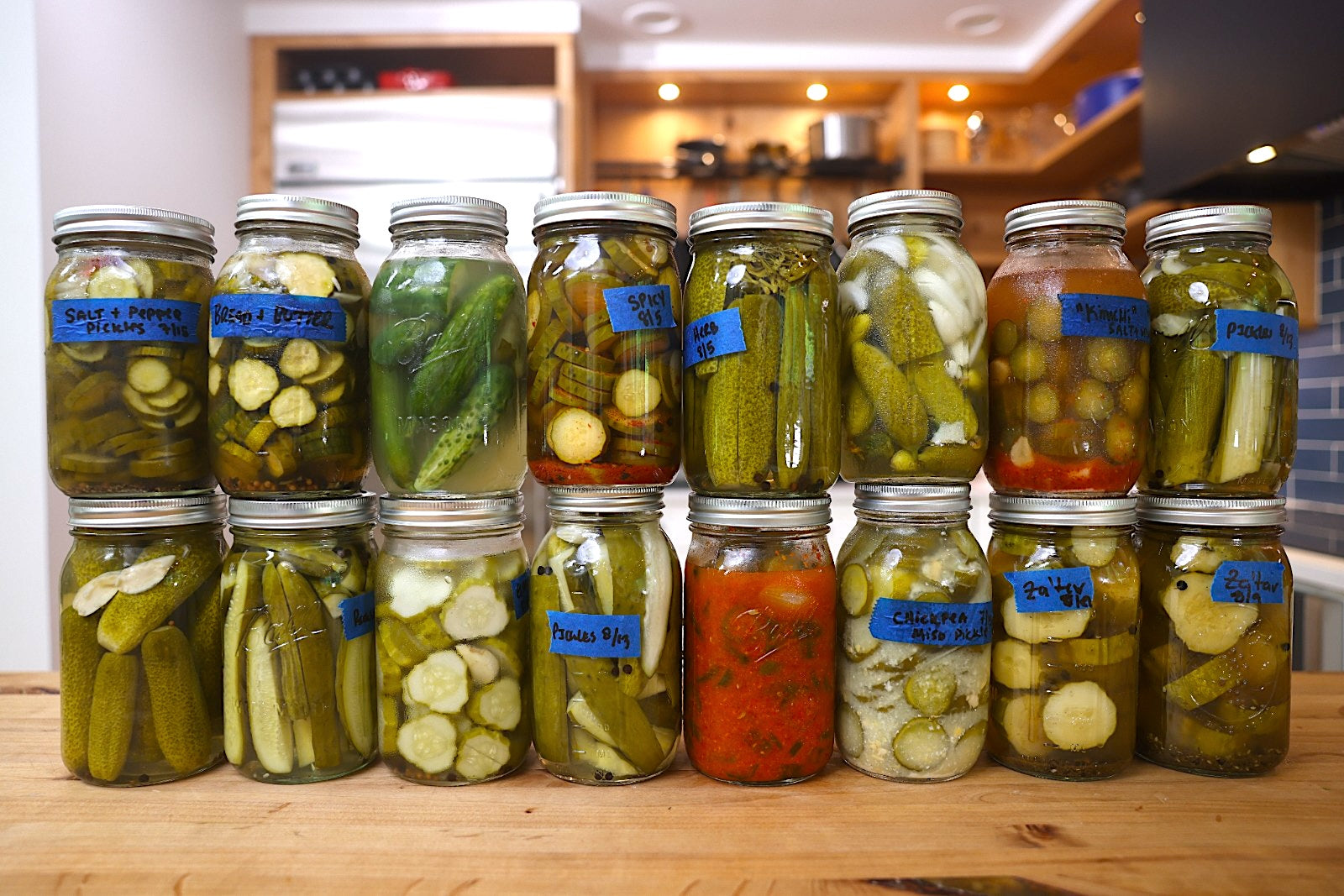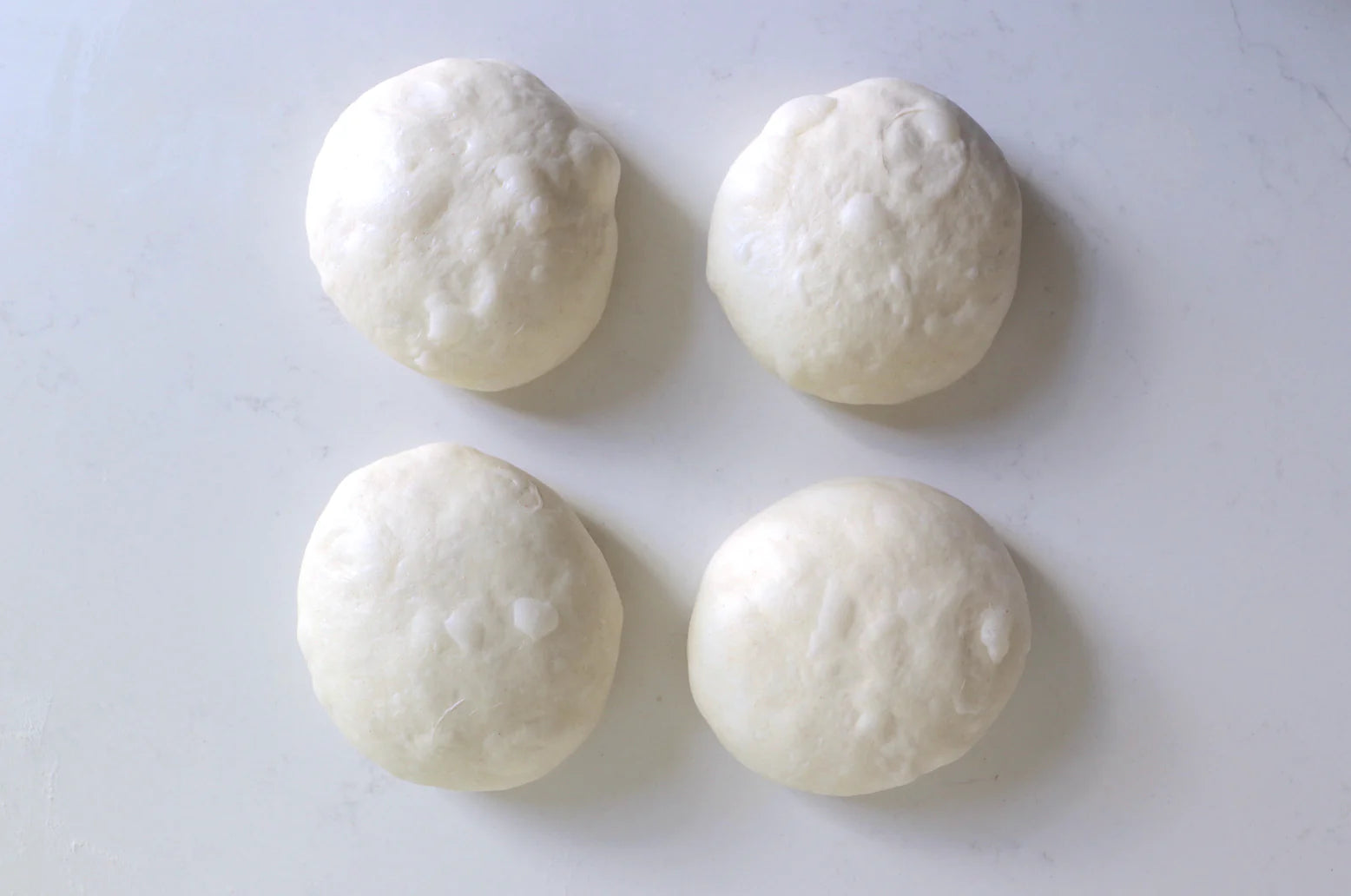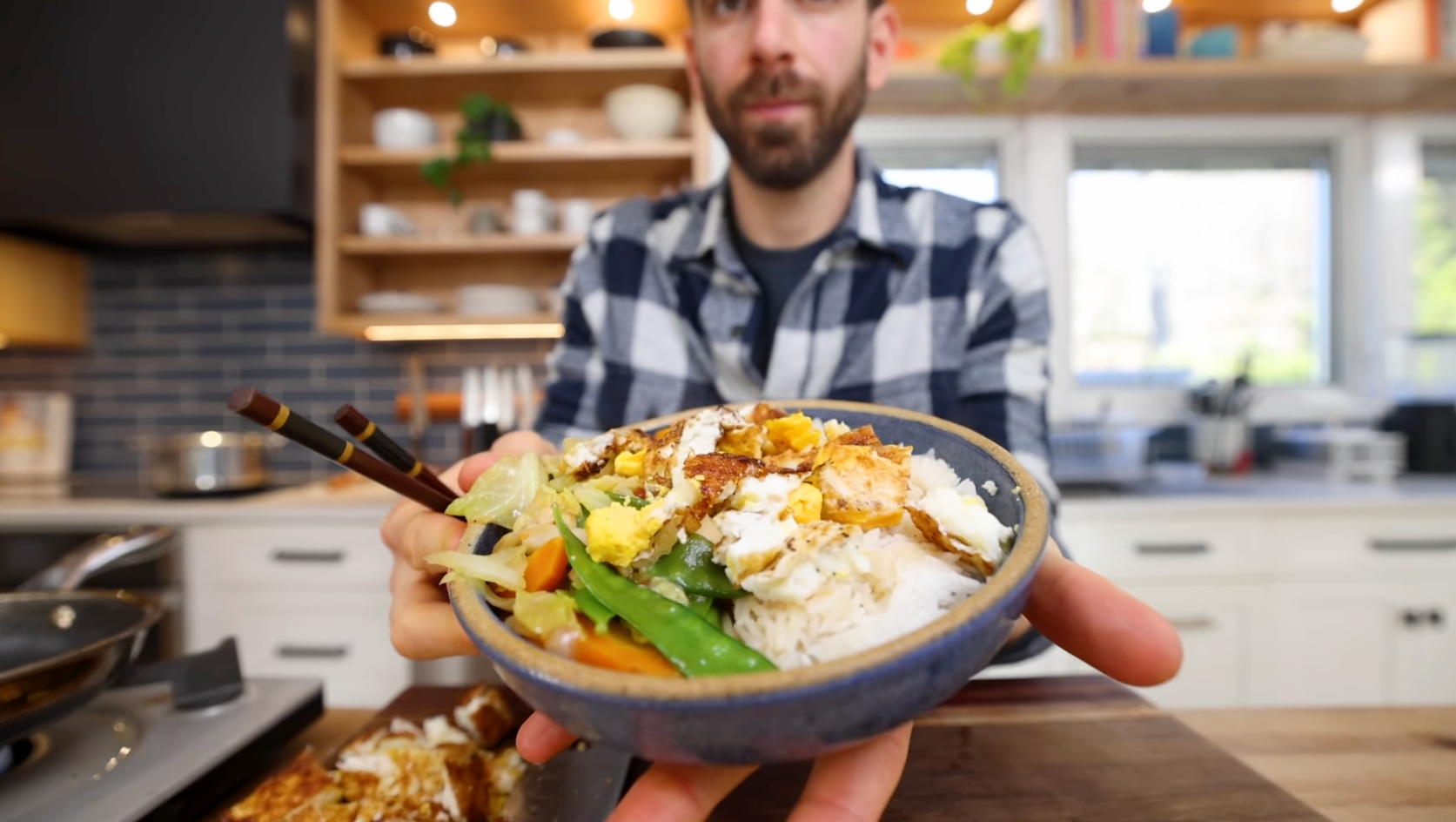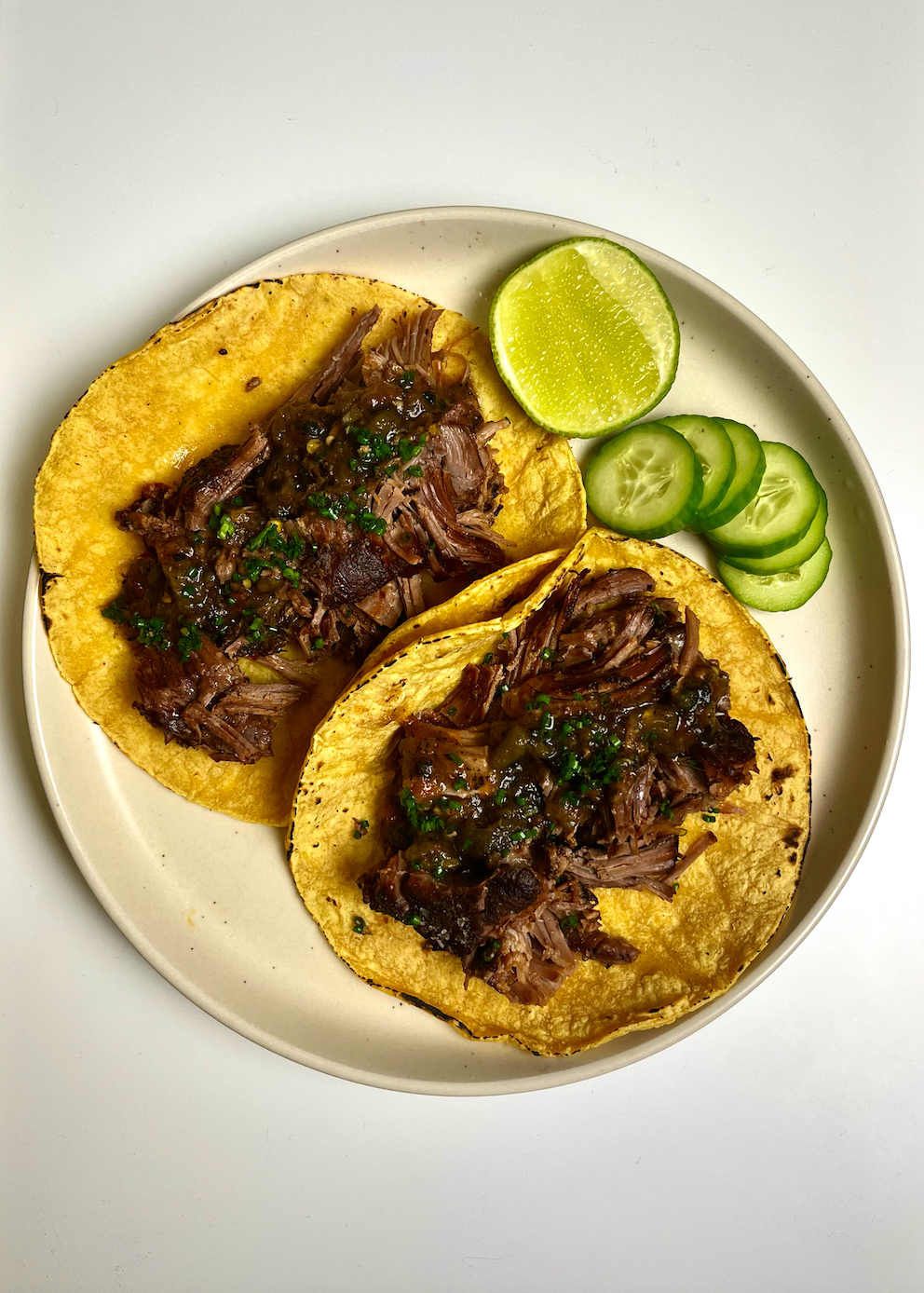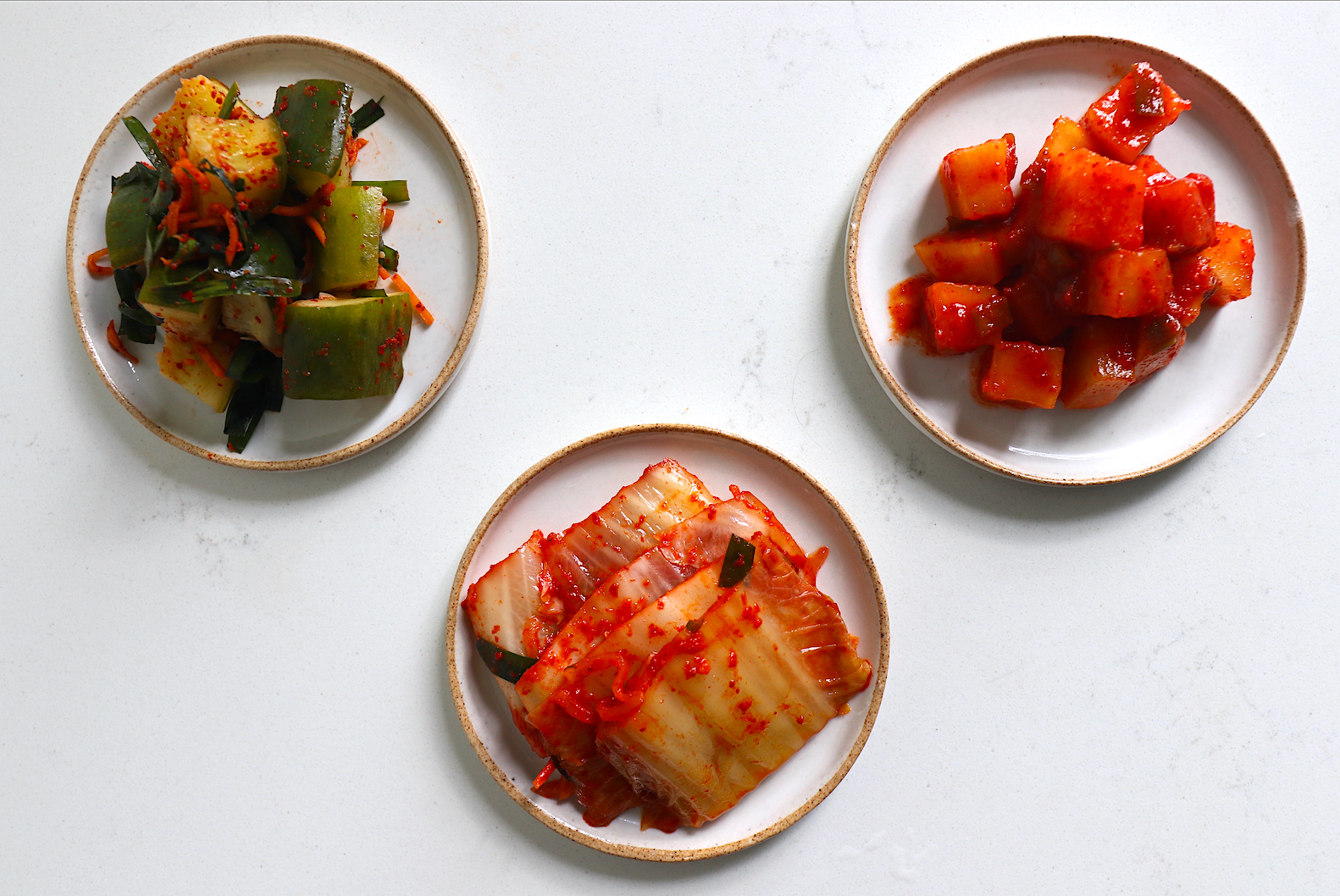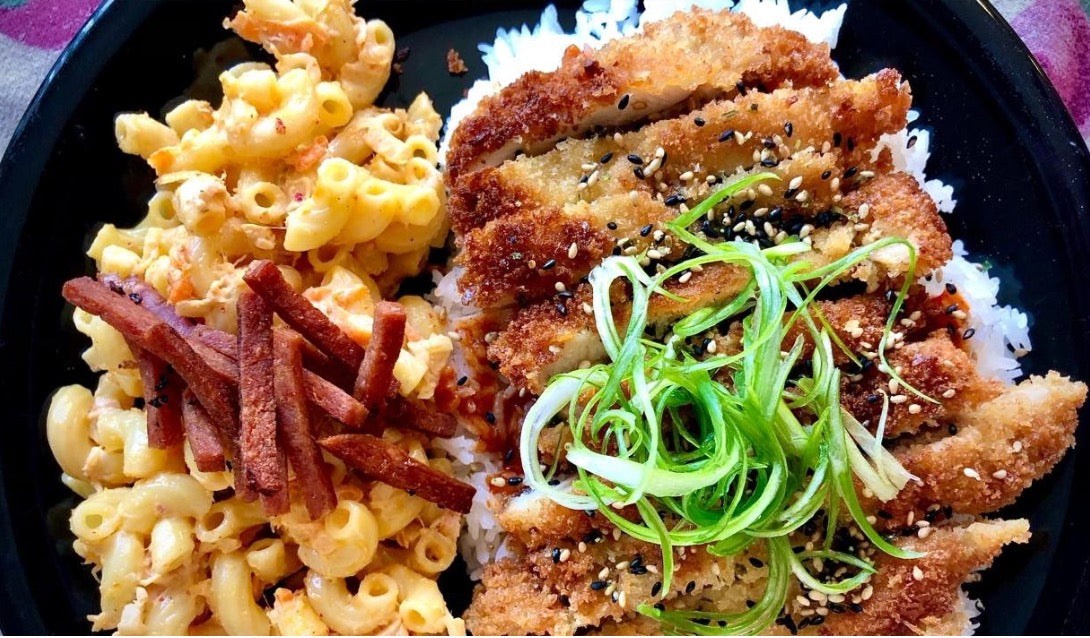
Pushing the Boundaries of Torikatsu!
By Brandon Muhawi
Senior Food Writer at Pro Home Cooks
Hey everyone! My name is Brandon Muhawi and I’m a new writer and recipe developer for Pro Home Cooks. While I’m not a professionally trained chef, I grew up in a diverse family that has always been involved with the culinary industry. My family comes from all over the world – from Vietnam to Palestine to Italy – and I’ve been very fortunate to experience home cooking from a wide array of cultures. As I’ve gotten older and had the chance to experience my own journey in the kitchen, I’ve come to love it as a creative outlet. I love to push the boundaries between food cultures in search of new flavors and techniques. This recipe is a sort of product of that experimentation using a dish that was one of my go-to orders as a child.
Sesame Kimchi Torikatsu + Kimchi Macaroni Salad
Before my juvenile tastebuds learned to appreciate the joys of sushi, chicken katsu was what I was anticipating at every Japanese restaurant. After all, what more could a kid ask for but intensely crispy bites of breaded chicken, fluffy white rice, and an almost-too-savory sticky brown sauce to dunk everything in. Chicken katsu (チキンカツ) is a dish that originates from Japan but has become common within Korean and Hawai’ian cuisines. The breaded chicken cutlets are a staple of neighborhood and chain Hawai’ian restaurants, often served on combo plates alongside barbecued meats and the ubiquitous macaroni salad. While the simplicity of a traditional chicken katsu is what allows it to share the stage so beautifully with those slices of grilled short rib, elevating the flavors of the dish forces it into the spotlight.
This recipe takes inspiration from flavors and techniques of the various cultures that have adopted katsu as a lunchtime favorite. While the spicy and fermented flavors of kimchi and gochujang might make the dish a little less friendly to a child’s palate, these additions are actually quite subtle. Usually, chicken katsu is carried by the sauce in terms of flavor complexity. The goal here was to pack some flavors into the chicken itself using the liquid from some kimchi. The katsu sings with its umami-filled marinade and the luxury of shiny sesame seeds studding the crust, and the katsu sauce is now a complement rather than a necessity.
The macaroni salad in a Hawai’ian barbecue combo plate is exactly what you want next to some crispy chicken or charred meat: super soft, creamy, and slightly sweet. However, mac salad is often somewhat bland. There’s no reason it can’t continue to hit all the right notes whilst being delicious on its own. The addition of tuna is a common practice for many recipes, in an effort to add some heft and substance. Kimchi is used again here, as a quick way to add a ton of fermented, savory flavors and a spicy kick. The spam croutons are there for some textural contrast, but are so crunchy, salty, and delicious that you’ll want to make them to top all kinds of dishes. Put this macaroni salad next to your katsu and the result is a sophisticated and savory combination that will still bring forth the nostalgia of eating breaded chicken and macaroni salad from a styrofoam box.
– Brandon Muhawi
Chicken Katsu:
The recipe for the chicken (mostly the technique) is incredibly versatile. Chicken katsu is deliciously universal and can make its way into sandwiches (sandos), Japanese curry, or a bowl of noodles. If you’re a fan of panko-coated chicken in general, slight alterations to the recipe will make it a great choice for dishes such as chicken parmesan or atop mashed potatoes and gravy. The chicken can also be swapped for the protein of your choice. Pork cutlets (tonkatsu) are the protein of choice within Japan and Korea, and sliced eggplants make a wonderful vegetarian alternative.
Ingredients:
- 1 pound of chicken thighs (boneless and skinless)
- 1 tbsp soy sauce
- 1 tbsp mirin
- 1/3 cup reserved kimchi liquid
- 1 tsp kosher salt
- Pinch of MSG (optional)
- 1/3 cup all-purpose flour
- 2 eggs
- 1 cup panko breadcrumbs
- 3 tbsp untoasted sesame seeds
- Neutral oil (for frying)
- Scallions (to garnish)
Instructions:
- Trim the chicken thighs of any large areas of excess fat. Using a meat mallet or saucepan, pound each thigh to an even thickness (between 1/8 and 1/4 inch thick). Placing plastic wrap over the chicken before flattening helps to prevent any raw chicken related mess.
- Combine soy sauce, mirin, reserved kimchi liquid, salt, & MSG in a large bowl. Place chicken thighs into a bowl and ensure each thigh is thoroughly coated in the marinade. Allow chicken to marinate in the fridge for a minimum of 1 hour.
- To set up the breading station, place the all-purpose flour, eggs, and panko breadcrumbs into 3 separate dishes. Add a pinch of salt to the flour, a tablespoon of water to the eggs, and the sesame seeds to the breadcrumbs. Mix each to combine thoroughly.
- After the chicken has marinated, bread the chicken by first coating each thigh in flour, then eggs, then breadcrumbs. Pressing breadcrumbs into the chicken ensures an even and crispy coating.
- Heat up 1/4 inch of neutral oil in the bottom of a large skillet over medium-high heat. You can test the oil temperature by throwing in a few breadcrumbs. If the breadcrumbs float and bubble fast, the oil is hot enough to begin frying. When oil is hot, reduce heat to medium and fry the chicken katsu, 2-3 minutes per side or until golden.
- Allow chicken to cool on a wire rack until ready to serve. Cut into strips and serve on top of rice. Garnish with thinly sliced scallions.
Macaroni Salad:
While kimchi has a very long shelf-life in the fridge, it can be hard to find ways to use the oversized jar you made or purchased from your local Asian grocer. One can only eat so much kimchi fried rice. In the end, treat kimchi as pre-seasoned vegetables. This macaroni salad is a great example. Chop it up and throw it in all kinds of salads, rice bowls, etc.
Ingredients:
- 16oz dry macaroni noodles
- 2 cups mayonnaise*
- 2 tbsp seasoned rice vinegar
- 2 tsp sugar
- 1 large carrot (shredded)
- 3/4 cup kimchi
- Salt and pepper (to taste)
- 1 can of tuna (optional)
- 1 can of spam (optional)
Instructions:
-
Bring a pot of salted water to boil and cook the macaroni noodles 1-2 minutes longer than package directions. The noodles should be soft and overcooked. Strain pasta and do not rinse. Set aside.
-
Finely chop the kimchi to pieces similar in size to the macaroni noodles or smaller and add to a large mixing bowl. Grate or shred the carrot using a box grater or mandoline and add to the bowl. NOTE: Kimchi will stain cutting boards immediately. I advise against using wooden boards and recommend rinsing the board used as soon as possible.
-
Combine mayonnaise, rice vinegar, and sugar in a bowl.
-
In the large mixing bowl, add pasta to the kimchi and carrots and toss in the dressing. Drain water or oil from the canned tuna and add to the macaroni salad. Add salt and black pepper to taste.
-
Allow macaroni salad to sit in the fridge for at least 1 hour before serving. As the pasta absorbs the dressing, more mayonnaise may be necessary to keep the salad creamy.
-
For the spam croutons, cut spam into 1-inch matchsticks and fry in neutral oil over medium-low heat. When they’ve darkened color and become crispy (4-5 min), remove from the pan and allow to drain on a paper towel. Garnish salad before serving.
*A note regarding mayonnaise choice: I’m a huge fan of kewpie mayonnaise, but it would be incredibly overpowering in these quantities. Add some if you’d like, but most of the mayonnaise used for the dressing should be some good-ol’ Best Foods/Hellman’s.
Gochujang Katsu Sauce:
Ingredients:
- 2 tbsp gochujang
- 3 tbsp ketchup
- 3 tbsp worcestershire sauce
- 1 tsp soy sauce
- 1 tbsp honey (or any sweetening agent to taste)
- Whisk together ingredients and adjust to personal taste.
What I Used to Create This Recipe:
- Stainless Steel Whisk
- Affiliate Link
- Pyrex Mixing Bowls
- Affiliate Link
- Cast Iron Skillet
- Non-affiliate Link
TOP ARTICLES

Sourdough Baking School
Master the art of sourdough bread baking in the most comprehensive baking class on the internet. This class features over three hours of baking content to help you start your sourdough journey.
See More


